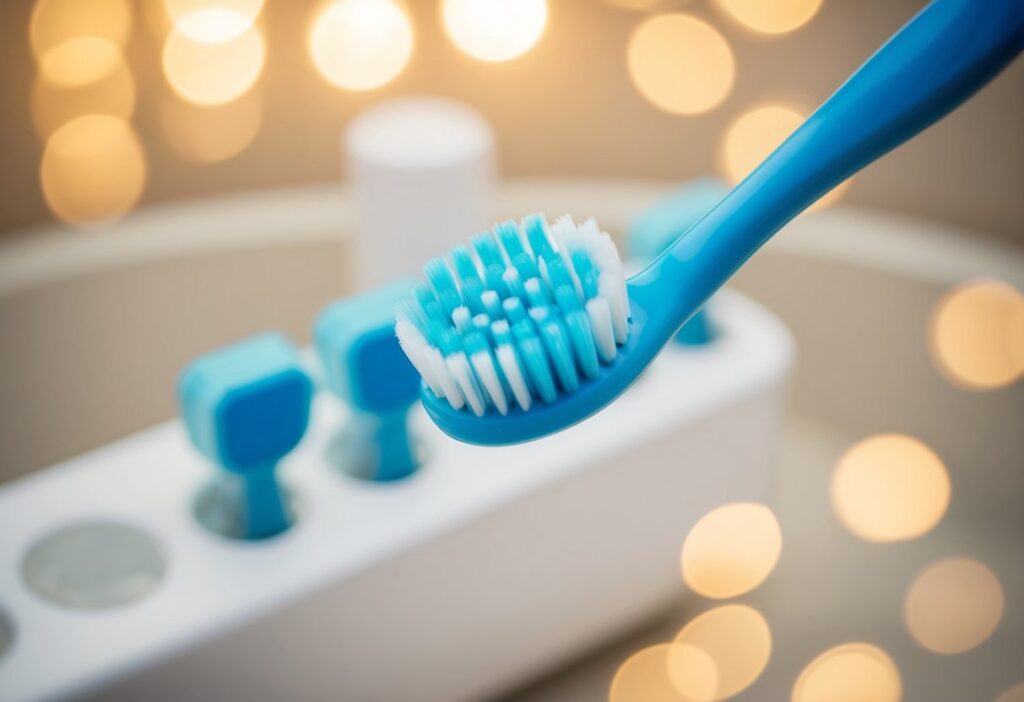Proper tooth brushing is a cornerstone of good oral hygiene, yet many of us may not be doing it quite right. We’ve all been taught to brush our teeth from a young age, but are we really getting the most out of our daily dental routine? The correct way to brush your teeth involves using gentle circular motions at a 45-degree angle to your gums, cleaning each section of your mouth for about 30 seconds.

Let’s face it, maintaining a healthy smile isn’t just about having pearly whites – it’s about keeping our entire mouth in tip-top shape. By mastering the art of tooth brushing, we can effectively remove plaque and food debris, preventing the buildup of harmful bacteria that lead to cavities and gum disease.
We’ll guide you through the fundamentals of proper brushing and share some advanced techniques to elevate your oral care routine. With these tips, you’ll be well on your way to a healthier, happier smile that would make any dentist proud.
Key Takeaways
- Brush gently in circular motions at a 45-degree angle to the gums for optimal plaque removal
- Clean all tooth surfaces systematically, spending about two minutes total brushing time
- Use proper technique and the right tools to maintain excellent oral health and prevent tooth decay
Fundamentals of Correct Brushing
Proper tooth brushing is essential for maintaining a healthy, beautiful smile. Let’s explore the key elements that make up an effective oral care routine.
Understanding the Importance of Oral Hygiene
We all know that brushing our teeth is crucial, but why exactly? Regular brushing removes plaque, a sticky film of bacteria that forms on our teeth. If left unchecked, plaque can lead to tooth decay and gum disease.
Brushing also freshens our breath and keeps our pearly whites looking their best. It’s not just about aesthetics, though – good oral hygiene is linked to overall health. Proper tooth-brushing is the cornerstone of preventive dental care.
We recommend brushing at least twice a day, ideally after meals. Don’t forget to brush your tongue too – it’s a haven for bacteria!
Choosing the Right Toothbrush
Selecting the perfect toothbrush is key to effective cleaning. We prefer soft-bristled brushes, as they’re gentle on our gums and enamel while still removing plaque effectively.
• Manual toothbrushes: Look for ones with a comfortable handle and a head that fits easily in your mouth. • Electric toothbrushes: These can be very effective, especially for those with limited mobility.
The bristles should be able to reach all areas of your mouth easily. Remember to replace your toothbrush (or brush head) every three to four months, or sooner if the bristles become frayed.
The Role of Fluoride Toothpaste
Fluoride is a dental superstar! This mineral helps prevent tooth decay by strengthening our enamel. That’s why we always recommend using a fluoride toothpaste as part of your daily routine.
When shopping for toothpaste, look for the Canadian Dental Association (CDA) seal of approval. This ensures the product meets the CDA’s standards for safety and effectiveness.
Use a pea-sized amount of toothpaste on your brush. There’s no need to overdo it – a little goes a long way! After brushing, spit out the excess toothpaste but don’t rinse your mouth. This allows the fluoride to continue working its magic on your teeth.
Advanced Brushing Techniques
We’ve discovered some marvellous ways to elevate our dental care routine. These techniques will leave our teeth sparkling and our gums in tip-top shape.
Brushing Routine and Technique
Let’s start with the basics, shall we? We always use a fluoride toothpaste and brush for a full two minutes. To ensure we’re thorough, we divide our mouth into quadrants, spending 30 seconds on each.
For the proper technique, we angle our brush at 45 degrees to the gum line. Gentle circular motions are key—we’re not scrubbing floors here! We pay special attention to the outer surfaces, then move to the inner surfaces.
Don’t forget those back molars! They’re prone to cavities, so we give them extra love. And for a fresh finish, we gently brush our tongue too.
Focus on Gums and Hard-to-Reach Areas
Our gums deserve just as much attention as our pearly whites. We use a soft-bristled brush to avoid irritation and gently massage the gum line. This stimulates circulation and helps prevent gum recession.
For those tricky spots between teeth, we’ve fallen in love with interdental brushes. They’re perfect for getting into nooks and crannies where our regular brush can’t reach.
Here’s a handy tip: we use a smaller brush head for hard-to-reach areas like our back teeth. It’s a game-changer for thorough cleaning!
Incorporating Flossing and Mouthwash
We love a well-rounded oral care routine. Flossing is non-negotiable. We do it daily to remove pesky food particles and plaque between our teeth.
Here’s our flossing technique:
- Use about 18 inches of floss
- Wrap most around our middle fingers
- Gently slide between teeth
- Form a C-shape around each tooth
- Move up and down, not back and forth
After brushing and flossing, we finish with a refreshing swish of mouthwash. It’s the perfect finale to our dental care symphony. It reaches areas we might have missed and leaves our breath minty fresh.

